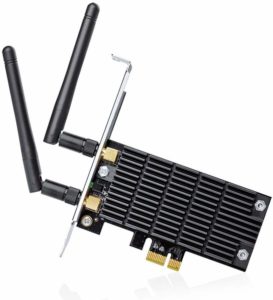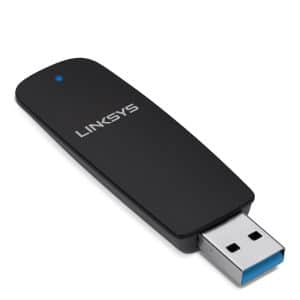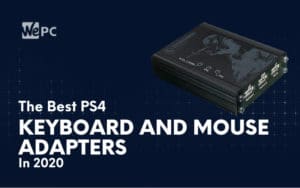Best USB Wi-Fi adapter for gaming – top 5 reviews in 2024
We Take You Through The Best Internal And External Wi-Fi Adapters At Different Price Points
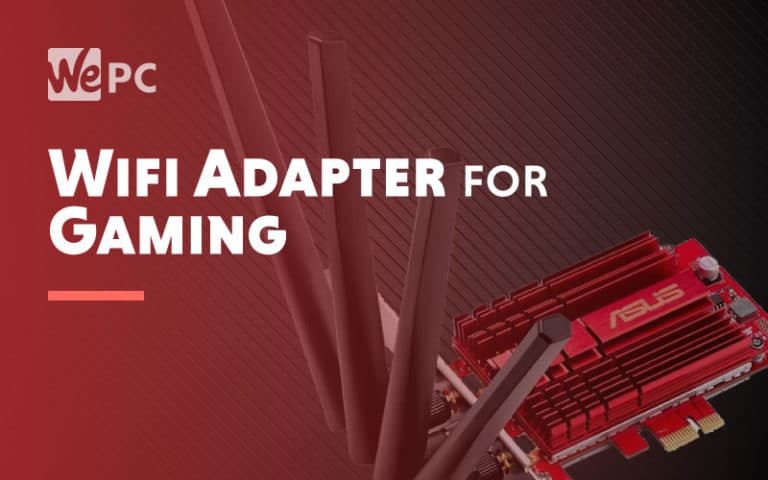
Over the past decade, we’ve seen some pretty impressive implementations come to fruition in the technological universe. We now have the ability to order our shopping via a speaker that talks to us, AMD CPUs are finally competing with Intel’s for the first time in decades, and Virtual reality gear now allows us to feel what we’re seeing.
However, one thing that hasn’t changed is the need for a wireless connection to the internet. Motherboard manufacturers still only provide onboard Wi-Fi support to a few hand-selected products. That means if you feel the need to connect wirelessly, you need to find one of the best Wi-Fi adapters the market has to offer.
But which one to choose? With a marketplace that’s currently flooded with affordable choices, how are we meant to know which are the best of the bunch?
Well, fear not, our team of dedicated PC enthusiasts is going to do all the research for you. We’ve tested some of the best (and worst) Wi-Fi adapters we could find to ensure your next purchase is the right one.
So, with that in mind, let’s dive into the best Wi-Fi adapters currently available.
Our Top Picks

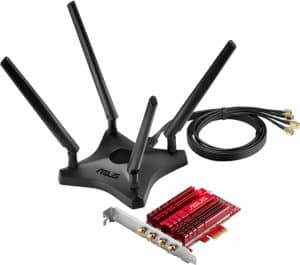
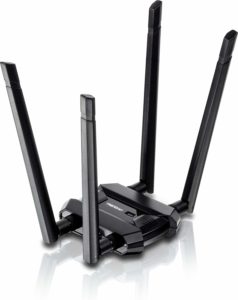
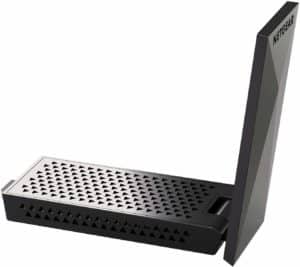
Things To Consider Before Buying A Wi-Fi Adapter
One of the best ways to ensure that your next hardware purchase is the right one is to fully consider the main factors before purchasing. One of the worst things you can do (as a buyer) is blindly jumping into a purchase without considering the main aspects of that hardware.
For that reason, we’ve outlined the most important aspects of a Wi-Fi adapter so that you’re fully equipped with the knowledge needed for your next purchase.
Form Factor
When we think of a Wi-Fi adapter’s form factor, we usually think of two main designs; external USB and internal PCI-e Wi-Fi card.
The external USB Wi-Fi adapter is by far the most popular and is fairly straightforward in both functionality and setup. It plugs directly into your computer via a USB slot and has simple software to get things up and running. Having said that, within the external USB design, you have a couple of different extensions.
You can go ultra-basic with a USB dongle that plugs into your USB slot and sticks out the back of your PC slightly. Or you can go for the more elaborate antenna hub, which sits on your computer/ desk and connects to the PC via USB cable. Both offer their own unique set of pros and cons – with the antenna providing a better range for the most part.
The other format you can opt for is the internal PCI-e Wi-Fi card. This makes use of a PCI-e slot on your motherboard and is the much more powerful option. These, too, come with antennae and provide excellent range/speed for the most part.
Wireless Range
For me, the range of a Wi-Fi adapter is one of the most important things to consider. I mean, what’s the point in a Wi-Fi adapter if it can only provide a decent connection from 8 feet away? You may as well just get an ethernet cable.
Each Wi-Fi adapter has its own unique ability to connect to the router, and this is measured by its range. Most of the newer Wi-Fi adapters come offering a pretty good wireless range, which is great for both gaming and general-purpose use.
The range doesn’t just refer to distance either. Trying to connect to your router through several walls, rooms, and floors can diminish the quality of your signal. Getting a Wi-Fi adapter with a strong range is key to ensuring your connection is always stable.
AC Ratings
Another important area to consider with your next Wi-Fi adapter purchase is the AC Rating. All wireless adapters come with an AC rating in their name – with the most popular being; AC1200, AC1300, AC1900, AC2600, AC3200, and so on.
AC means that the Wi-Fi adapter has support for the latest 802.11ac networking standard. This offers faster wireless network connections on a 5GHz frequency. Neat. The number that immediately follows the AC is meant to represent the maximum bandwidth of that adapter. But, that isn’t quite the case.
You see, this is just a theoretical figure that, when put to the test in real-world situations, doesn’t really live up to the numbers.
With that in mind, however, it is always worth getting the fastest AC rating possible. Even though the adapter isn’t going to live up to the proposed maximum bandwidth, it’s still going to be faster than an adapter with a lesser rating.
Wireless Standard
Wireless standards determine the speeds that wireless devices can reach. While various standards are on offer in this list, all of the devices support at least one of the following three:
- 802.11g – Up to 54Mbps throughput
- 802.11n – Up to 900Mbps throughput
- 802.11ac – Up to 1300Mbps throughput
This makes 802.11ac, or Wireless AC, the obvious champion. Which makes a ton of sense, considering it’s the newest standard!
Wireless AC isn’t quite a completely-adopted standard yet, but it’s still quite relevant. All of the latest Wi-Fi capable routers and devices are adopting it as the speed of consumer Internet connections increase, allowing wireless devices to use all the bandwidth available to them.
Even if you don’t have a Gigabit Internet connection, an 802.11ac router and adapter will still benefit your gaming experience thanks to significantly lower latency.
USB 2.0 vs 3.0
USB 2.0 and USB 3.0 are a question of latency and little more. The short version is, USB 2.0 is okay, and USB 3.0 is good.
Gaming on Wi-Fi, however, will never be “great” as far as latency is considered. Wireless interference is nigh impossible to avoid, and no Wi-Fi connection will ever be as reliable as an ethernet connection.
Getting a USB 3.0/Wireless AC adapter, however, will at least minimize your gaming on Wi-Fi issues.
Antennae
Antennae come in several different shapes and sizes – all of which have their own pros and cons. They range from the small and inconspicuous to much larger four-prong desk hubs (as I like to call them).
As a general rule of thumb, the bigger the antenna, the better the range – but, obviously, that isn’t always the case.
There’s also a fairly dramatic price difference between the two different antenna styles, so be sure to consider that before your next purchase as well.
Cooling
Cooling is probably an area that not many consider when looking at Wi-Fi adapters, but it should be. If you’re looking at an internal PCI-e Wi-Fi card, then I seriously recommend getting one with a heatsink. These will come at a slightly increased cost but will operate much more efficiently.
Furthermore, the additional heat provided from a Wi-Fi card that doesn’t have a heatsink will, ultimately, increase the internal temps of your PC. Something that we discuss in more detail in our CPU/GPU optimal temperatures article.
The
In-depth Review



- Lightning quick connection speed
- R-SMA antenna connectors make for a customizable setup
- Antenna extends
- High price point
When we mention ASUS, we’re usually showcasing one of their impressive aftermarket GPUs or high-end monitors. However, in this case, we’re displaying their high-performance PCE-AC88 AC3100 PCI-e Wi-Fi adapter as the best in its class.
The PCE-AC88, as we’ll call it (catchy I know), comes to shelves boasting an array of premium features which include; the latest AC3100 Dual-band 4×4 Wi-Fi, 802.11ac wireless standard, excellent coverage/speeds, and a custom heatsink that not only looks great but excels in reducing temps as well.
It’s part of the AC3100 line by ASUS, which is head and shoulders above the more commonly used AC1900 you’re likely to see in other Wi-Fi adapters. Furthermore, all the modern-technologies have been implemented in the PCE-AC88, which makes this product extremely good value for money. Think MU-MIMO, an extremely effective antenna setup, and beamforming.
As far as gaming is concerned, you’re going to do well to find anything better equipped for the job. It offers an extremely stable connection thanks to high speeds and its wide range.
Overall, as far as internal PCI-e Wi-Fi adapters go, this is by far one of the best currently available.
- Very fast speeds
- Excellent range
- Quite a large antenna unit
Moving away from the internal PCI-e options comes the ever-popular TRENDnet TEW-809UB USB Wi-Fi adapter. It’s our number one pick for an external option and for good reason.
This adapter comes to the table boasting all the premium features you would want from a Wi-Fi adapter and more. It may be a little on the bulky side, but the size really pays off in both the speed and range departments.
The TEW-809UB makes use of super-fast AC1900 speeds and comes equipped with a four antenna hub as well. Each antenna has a 5 dBi strength and can accommodate an entire household with ease.
We tested the TEW-809UB in several different games and were surprised at how good this device was at keeping a stable connection. We tested it in both 2.4/5GHz bands, and both offered a great connection and in the hardest to reach parts of our office.
Overall, a fantastic purchase if you don’t mind having a large antenna hub lying around.
- Very wide range
- Showcases excellent value for money
- Fairly large in comparison to other USB adapters
It’s probably to no one’s surprise that our guide features a NETGEAR adapter in it. NETGEAR has been offering excellent networking devices for sometime now, and the Nighthawk AC1900 is no different.
This Wi-Fi adapter brings the AC1900 rating to the portable world and offers up fantastic speeds and range for both desktop and laptop users alike. Even though it falls short of the internal PCI-e cards in performance, it does offer a much easier to use design and comes with a magnetic desktop cradle as well. The cradle, for those unaware, ensures your PC gets the absolute best possible connection from your router at all times.
On the downside, the NETGEAR is a little bulky when comparing it to other similarly priced alternatives.
As far as quality USB adapters go, this one comes to the table showcasing excellent bang-for-your-buck and should definitely be considered.
- High quality range
- Excellent heatsink for the price point
- Doesn't offer great speeds
Next up is TP-Link’s T6E Wi-Fi adapter. It’s our number one pick for people looking to purchase an internal PCI-e card on a budget.
The T6E is a standard two antenna internal Wi-Fi card that, unlike the ASUS, doesn’t come with an antenna hub. It does, however, offer two small antennae, which are directly attached to the card itself, making it much more discrete.
As for speeds, the T6E falls into the entry-level end of the spectrum when referencing 802.11ac standards. Having said that, it’s still a fairly decent option for gamers. When we tested this adapter, we found the connection to be pretty solid for the most part. It also allowed for a pretty decent range as well, which is always a bonus.
The heatsink on this thing is definitely something you don’t usually get with adapters of this price point – which only increases the overall value of this product. It ensures temps are kept low at all times, meaning your internal system temps won’t be affected by this card.
If you’re looking for an internal PCI-e Wi-Fi adapter but don’t fancy spending a fortune, look no further. TP-Link have you covered.
- 3x3 internal antenna array for strong signal and range
- Dual-band support
- No USB 3.0 support
- No AC support
The Dual-Band Wireless-N adapter from Linksys is another interesting one. While it still doesn’t have USB 3.0 and drops the Wireless AC from the previous entrant, it’s quite a bit more interesting thanks to two new features.
The first of which being its internal antenna array. This is the largest of the plug-it-and-forget-it options because of that, using a 3×3 MIMO antenna array to offer amazing wireless performance despite no visible antenna.
In addition to the MIMO array within the adapter, it also supports proper Dual-Band Wi-Fi and WPS connections. With a max speed of up to 450 Mbps, this is one of the most powerful USB Wi-Fi adapters you can get.
frequently asked questions
Is a USB WiFi adapter good for gaming?
A USB WiFi adapter will be great for gaming on the go and it’s easy to use, but it’s also worth remembering that they offer less powerful performance compared to alternative WiFi.
Gaming requires an internet connection that can keep up with your gameplay so that there is no lag or latency in your game. Using a USB WiFi adapter can help you achieve smoother, more seamless gaming which will improve how well you can immerse yourself in the game.
Ultimately, it will be hard to determine exactly how good a USB WiFi adapter will be for gaming purposes as it depends on a variety of factors, including your router, wireless spectrum background, and any obstacles slowing down your internet connection.
With that being said, USB WiFi adapters are fine for general gaming, especially titles like ‘Trackmania’ or games that aren’t particularly fast-paced, although the connection may become less stable when playing more demanding games that require a higher fps rating.
For professional gamers or during competitions, it’s worth checking out Ethernet internet as an alternative.
Does a WiFi adapter affect internet speed?
Yes, a WiFi adapter can affect your internet speed in a few different ways.
The distance between your wireless WiFi adapter, for example, could decrease the strength of the signal which would make the connection weaker. A bigger gap or distance between them also leaves room for objects to block the signal which will affect the internet speed.
This can also potentially affect your overall gaming experience because a poor connection will seriously slow down the speed of your internet connection, and this can end up interrupting the frame rates as well as cause glitches in your gameplay.
However, as long as the internet speed doesn’t drastically decrease due to using a WiFi adapter, you probably won’t notice much of a difference in your gaming experience.
Is a WiFi adapter better than Ethernet?
Compared to using a wireless connection, an Ethernet cable connection is typically a faster, more reliable way of connecting your PC to the internet. Ethernet provides quicker data transfer speeds with more consistency and has lower latency.
When it comes to data protection and security, Ethernet is the superior choice again as it doesn’t require data encryption in order to keep your information safe, whereas with a WiFi adapter you would need the data flow to be encrypted.
WiFi adapters tend to be the preferred choice, however, if convenience ranks higher on the priority list for you than internet speed. This is because it allows you to use a wireless connection (within range) rather than having to be physically connected via a cable.
They’re easier to install and are a convenient way to stay connected to the internet when you’re on the go, but in terms of head-to-head performance, Ethernet will provide a faster, more consistent connection which makes it the better choice for gamers.
How long do USB Wifi adapters usually last?
If you buy a USB WiFi adapter brand new, you should be able to get anywhere between 1 and 5 years of use out of it before you need to replace it, although this of course depends on the quality of the WiFi adapter and how well you have looked after it over the years.
For example, constantly disconnecting and reconnecting the USB WiFi adapter throughout the day will cause it to wear out faster and it, therefore, won’t last as long. Allowing your PC to run at hot temperatures can also cause the lifespan of a USB WiFi adapter to be shorter.
Final Word
And that’s it!
We’ve gone through all the best options for USB Wi-Fi adapters for gaming. We hope that our analysis of the contenders, in addition to our info section, helped make your next Wi-Fi adapter purchase a little easier.
Which one was that for you?
WePC is reader-supported. When you buy through links on our site, we may earn an affiliate commission. Prices subject to change. Learn more

